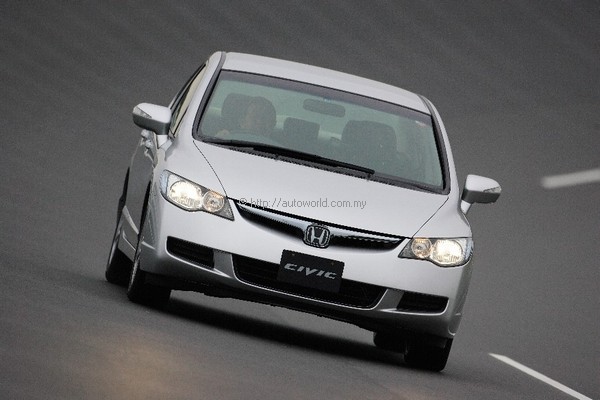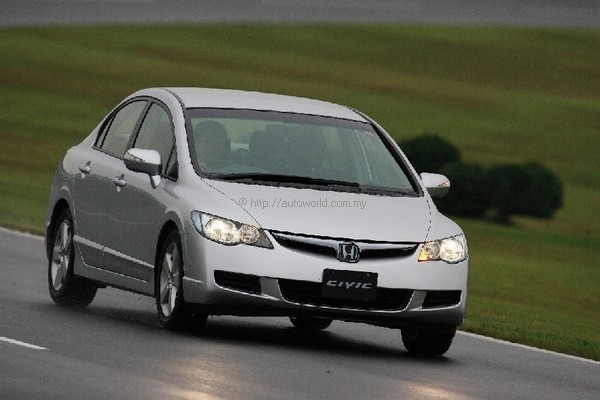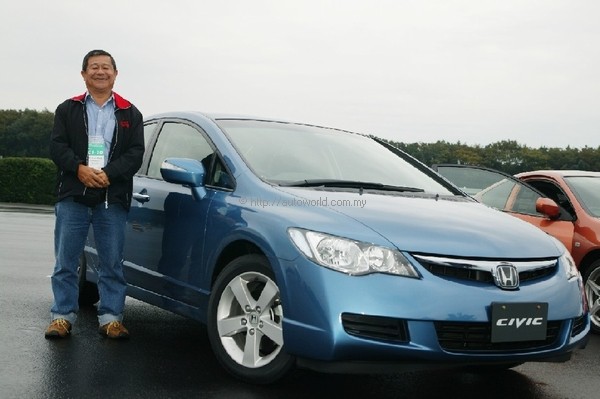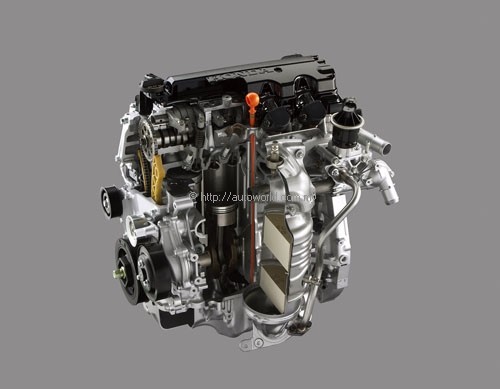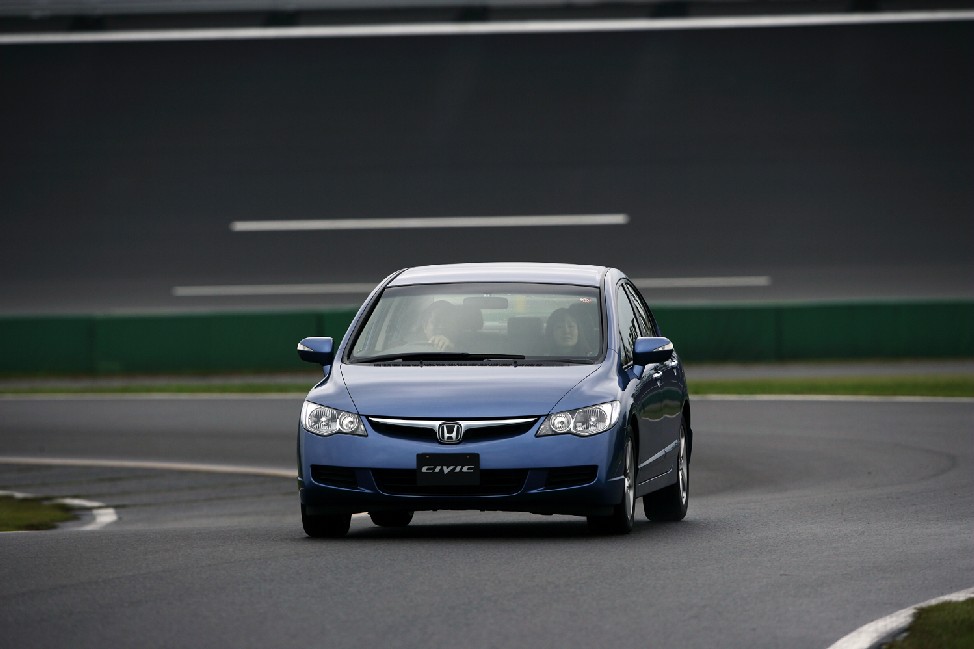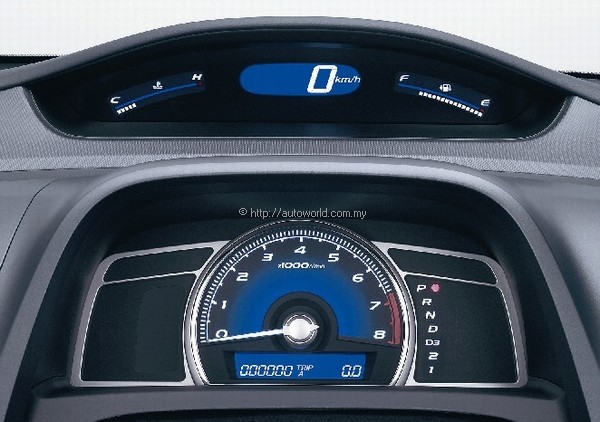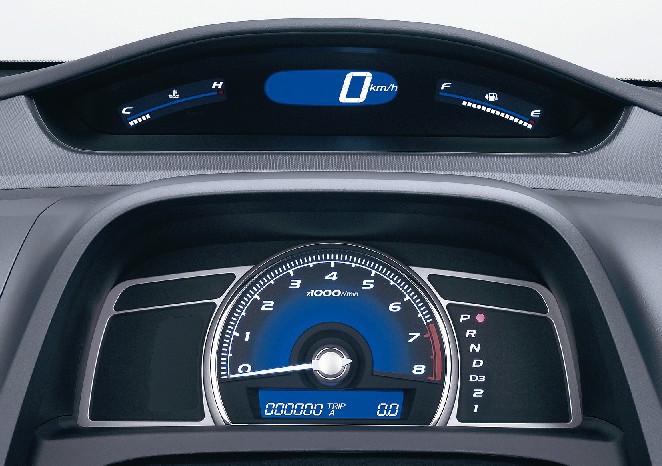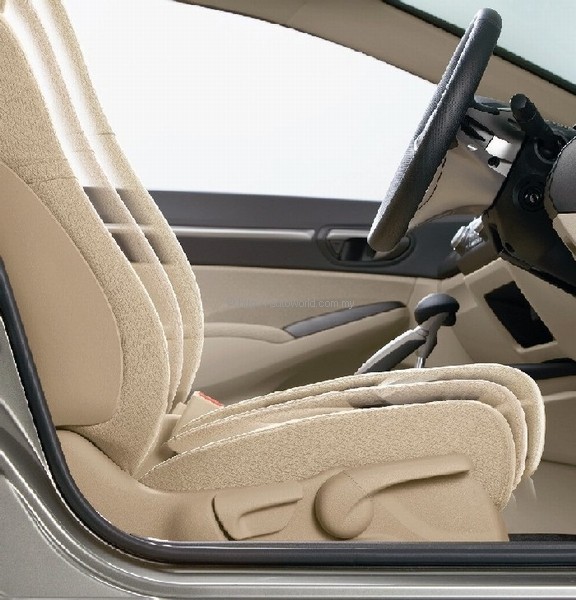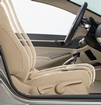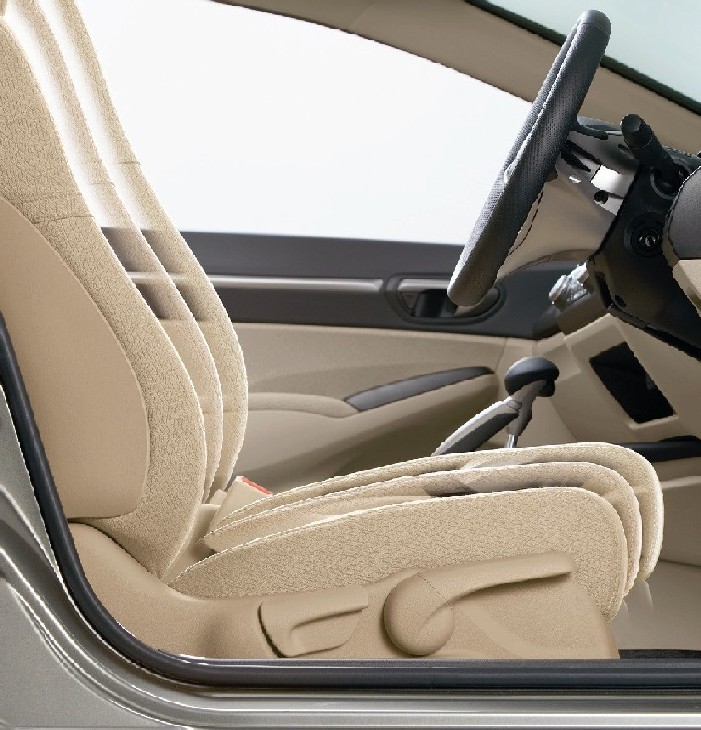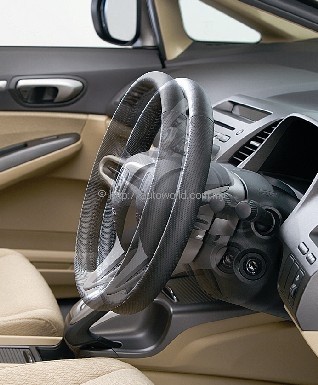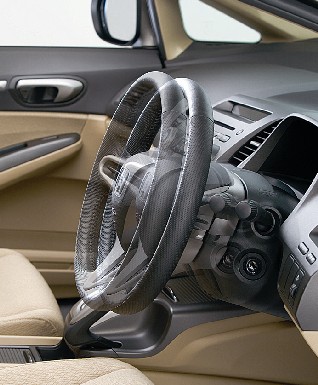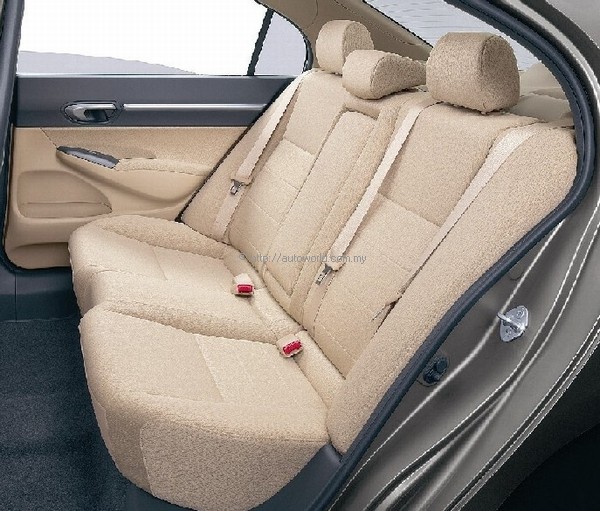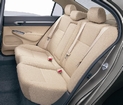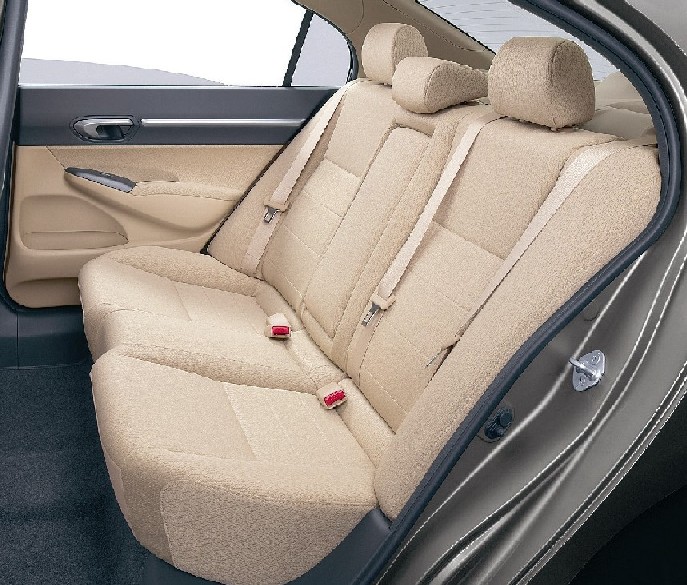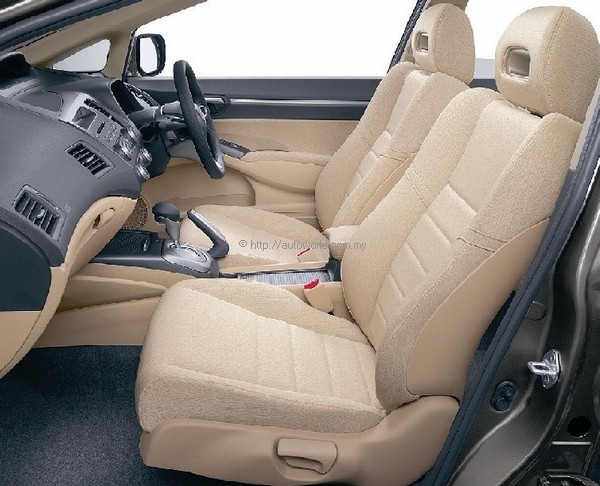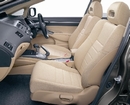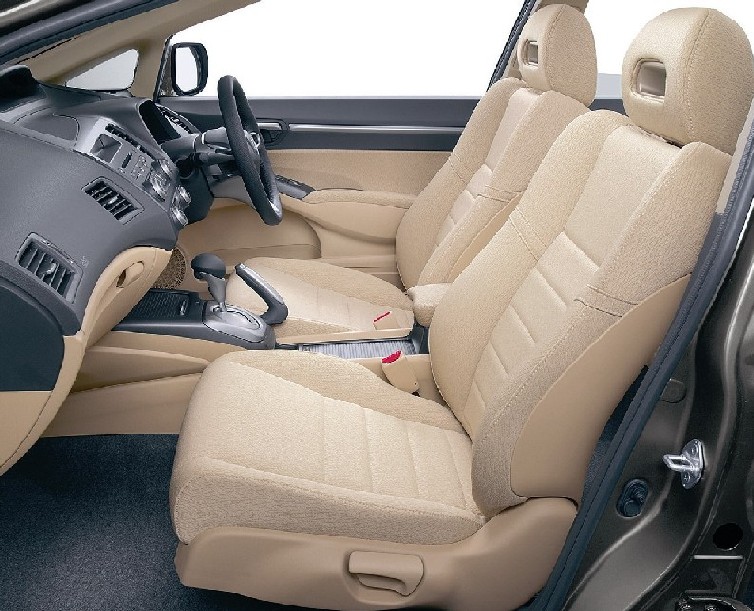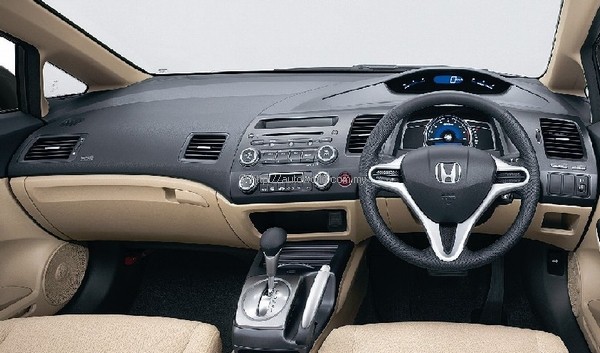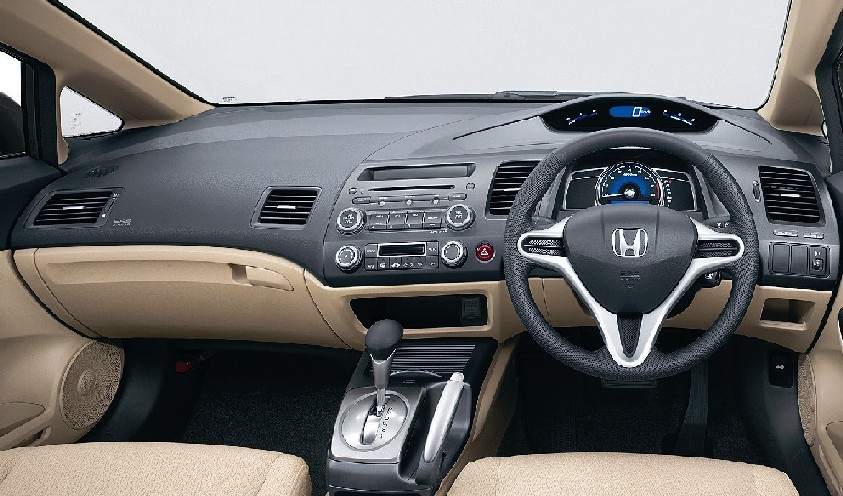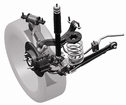2006 Honda Civic – Power of a 2.0 litre, Economy of a 1.5 litre
New Honda Civic – Power of a 2-litre, Fuel Economy of a 1.5 litre
The Honda Civic is Honda’s single largest selling model, being responsible for more than 50 percent of Honda’s total sales of cars in the world. Having produced and sold more than 16 million units since its first introduction in 1972, failure is not in Honda’s vocabulary. Thus, Shinichi Takahashi, Chief Project leader for the development of the new Honda Civic had quite a challenging task at hand, when he was put in charge of the project. The new Civic had to be ahead of its time, so that it would withstand competition from all quarters, not only now, but for the next five years to the next introduction, and beyond.
It also had to be better, in terms of drivability, safety, handling dynamics, and aesthetically. Quite a tall order, but Takahashi-san and his team went to work, and the all-new Honda Civic, which debuted at the Frankfurt Motor Show in September, and went on display at the Tokyo Motor Show in October, is proof that the team has done a great job.
Although the Civic is a brand new car designed from the ground up, it retains the basic Honda DNA that makes the brand name unmistakable. With a wheelbase of 2700mm, that is longer than the current model by 80mm, and a wider track of 1500mm (+30mm) at the front, and 1525mm (+60mm) at the rear, the new Civic boasts of a larger cabin space, and is overall, a much larger car than the current Civic. Built into the design of the body is a new ‘cab-forward’ layout, together with a windshield that has also been extended forwards, to give improved visibility and a feel of spaciousness. The sensation that one gets when behind the wheel is akin to riding in an MPV rather than in a car, because of the additional distance between the driver and the edge of the windscreen, which had been thrust forward due to the much wider and larger glass area. Wheel size has gone up to 16 inches to keep up the overall visual perspective of wheel size in relation to body size. Unless you put the old and the new model side by side, you would most likely not notice the larger body size of the new model.
Inside, Takahashi-san and his team built in a human-oriented functional layout, setting a new direction for Honda interior design. The result is an easy-to-drive package that backs up the new Honda ‘FEEL FINE’ approach introduced during Tokyo Motor Show, that epitomizes Honda’s philosophy to build cars that are fine in quality, fine to drive, and fine to the environment. Of note is an ergonomically designed driver’s cockpit with logical functionality, and with critical driving information displayed higher up on the dashboard, directly in front of the driver so that he or she does not have to look down to see the information. This is done by incorporating a separate digital display above the standard meter cluster, located just under the windscreen in front of the driver. This results in less driver fatigue, due to less time spent with eyes off the road looking down to see the information. The seats are re-designed to fit the natural contours of the human body, with rake, fore and aft adjustability, plus 50mm height adjustment. The seats have a re-designed frame that includes a self-adjusting back support, and soft urethane side supports that make you sit in them instead of on them. In addition, the three-spoke steering wheel features adjustability for both height and reach, which, when combined with the versatile seat design, enables people of all shapes and sizes to find the optimum driving position.
There are numerous pockets for the storage of knick-knacks, and the rear door pocket can hold up to three water bottles. The rear floor, thanks to new design technology, is flat, without an irritating centre tunnel, and the rear seats have a centre headrest in addition to the two side headrests. A thoughtful feature is the rear 60-40 split-fold seat, with the control levers located inside the boot for convenient usage while loading up the car. Entry to the trunk is keyless, with a control button on the remote. The regulation driver and front passenger airbags are standard; side curtains are available, but it is not known if these will appear in Malaysia.
The engine is a newly developed 1.8 litre SOHC I-VTEC unit with many innovative features. The overall result is one that delivers the power of a 2.0 litre conventional engine (140PS), (+10PS versus the current 1.7 litre Civic), and maximum torque of 174Nm, (+19Nm), despite the move back to a single overhead camshaft arrangement. In terms of fuel economy, the new engine delivers a fuel economy of 6.7 litres per 100 kilometres, based on EUDC test standards. In real world conditions, actual fuel consumption will be a little more than this, especially in Malaysia, where nearly everyone drives with the air-conditioner set near freezing point, and of course, other traffic on the road. Nevertheless, one is likely to see improvements in the overall fuel economy compared to similar cars of other makes.
The key to the power and fuel economy improvements is in several innovative breakthroughs in Honda’s engine design. Friction within the engine is greatly reduced by having pistons shot with molybdenum disulfide, ion plating on the piston rings, and a process called plateau honing applied to the cylinder walls. A drive-by-wire system, working together with a new and improved I-VTEC engine management system that varies the valve closure timing according to engine load, and a simple but brilliantly designed variable length intake manifold, combine to give the new engine the best of two opposing worlds, power, with outstanding fuel economy. Another piece of good news for Civic lovers is that the timing belt has been done away with, the designers opting for a timing chain arrangement instead. This timing chain arrangement is a new design, claimed to run quieter, and said to require zero maintenance. Truly, this engine will remain ahead of its competitors for a long time to come.
Another great feature that endears the new Civic to me is the inclusion of a 5-speed automatic transmission. If I am not mistaken, Honda is the first Japanese manufacturer to introduce a 5-speed automatic gearbox in this class of vehicle (1600 to 1800 cc class). In addition, there is a lock-up clutch in every gear to reduce transmission slip, thereby helping in acceleration times and further improving fuel economy.
Drive is to the front wheels, with McPherson struts for the front suspension. The front suspension also has a high caster angle built-in to ensure good self-centering and high straight-line stability. The front springs are built with varying pitch to cancel out lateral forces during cornering. The rear suspension is a trailing arm and double wishbone arrangement, with a longer arm span to reduce rear camber change during suspension movements, for better stability. Stabilizer bars are fitted both at the front and back. To improve handling further, the torsional rigidity of the body has been improved by 35 percent over the current body, new suspension geometry has been adopted, and aluminium is used for the rear knuckles to reduce unsprung weight. The benefit is better handling characteristics all round, making the Civic an easy to drive vehicle. We did have a short session driving the new Civic around the Honda Test track, and although it was a wee bit too short a stint to get a full impression, the initial feeling is good.
Another new feature that adds value to the already great Civic is the addition of TCS (Traction Control System) that works with the ABS to keep the car on the road. The Civic also features IHCC (Intelligent Highway Cruise Control). This is a sophisticated system that when activated, not only keeps your speed constant on the highway, but also senses the vehicle in front of you, and keeps a pre-set distance away, applying brakes automatically if the car in front slows down.
In terms of NVH (Noise, Vibration and Harshness), the new Civic is much improved over the current model. This is achieved by the reduction of friction in the new engine, a re-designed intake system to reduce intake roar, new design engine mountings, double door seals, and soundproofing materials liberally used throughout the car.
It appears to me that Takahashi-san and his team have done a great job with the new Civic. They have managed to put together a package that is ahead of its time, that will deliver a fine driving and ownership experience to its owners for a long time. As for me, I am looking forward to seeing the car in Malaysia. No prices are available as yet, but I have been told that the price will be ‘competitive’. According to a spokesman, we will get to see the first units rolling out from the Honda assembly plant in Malaysia around March 2006.




